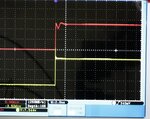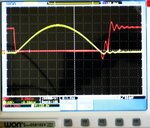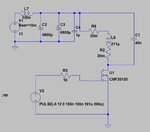Monolith
Junior Member level 1
- Joined
- Sep 21, 2009
- Messages
- 16
- Helped
- 0
- Reputation
- 0
- Reaction score
- 0
- Trophy points
- 1,281
- Location
- Switzerland
- Activity points
- 1,415
When I switch the IRFP640 N Mosfet ON, I get some ringing. My guess is that this is due to the Miller effect.
How can I avoid it?
How can I avoid it?


